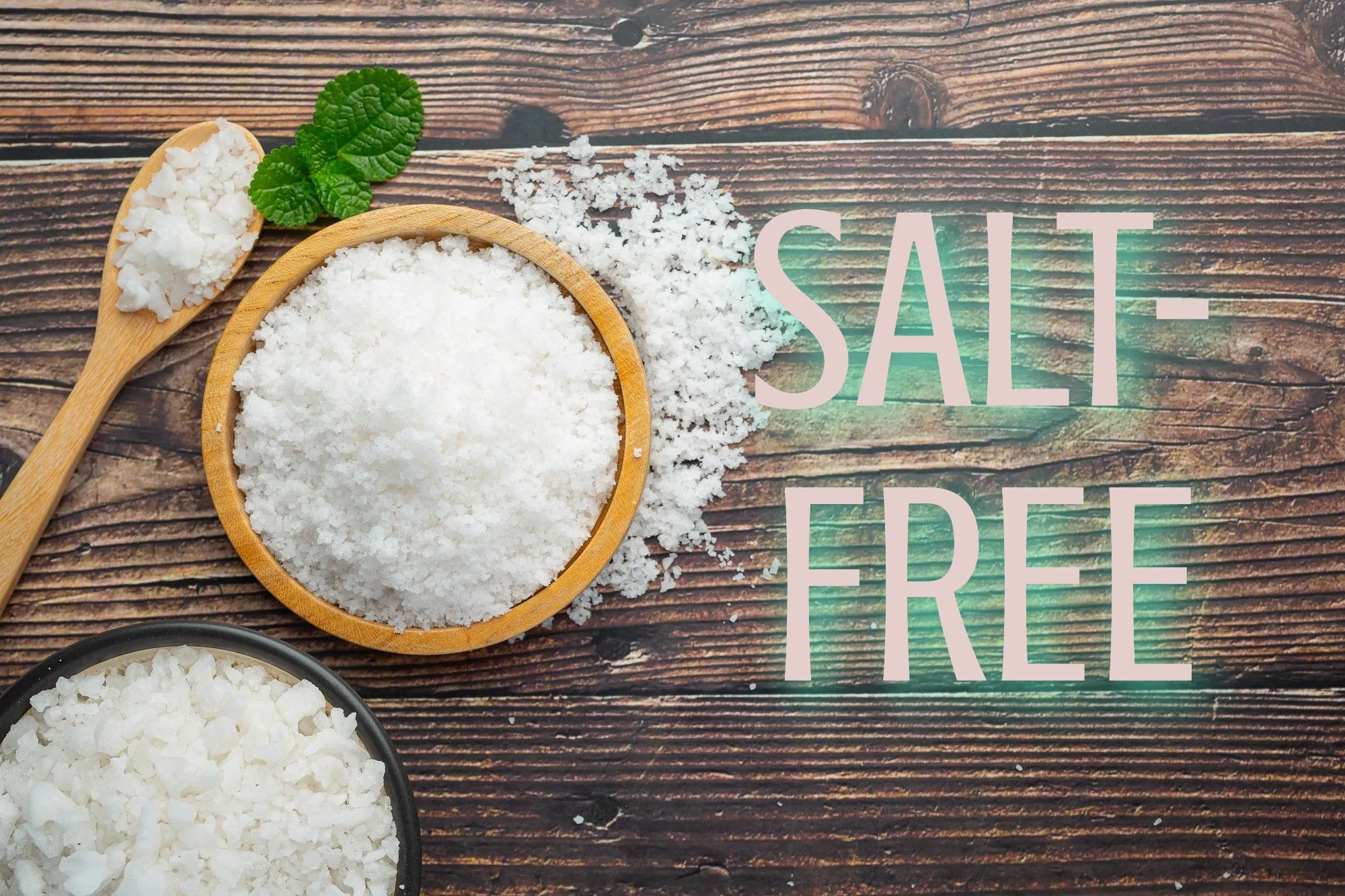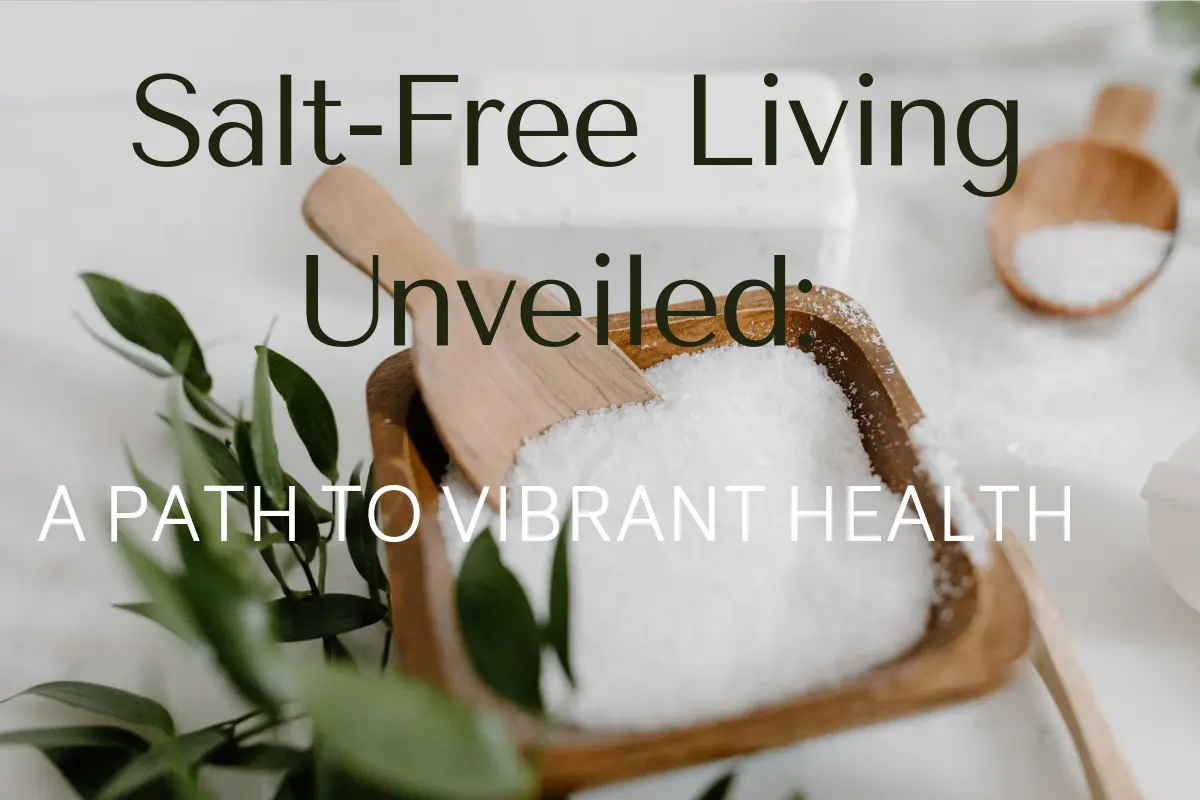Introduction
Embark on a flavorful voyage with “Salt-Free Challenges, successes, and pure joys in undergoing this transformation in my dieting.” This is not a mere trip by throwing away the salt but the story of finding exciting alternatives, tasting different tastes, and decoding for a healthy living life. Prepare for a story of savor, tenacity, and electing wellbeing—a stroll where each stride is an advance towards salty-free accomplishment.
 Understanding the Impact of Salt on Health
Understanding the Impact of Salt on Health
Explaining the role of salt in our diet
Salt is like the unsung hero in our diet, doing some essential jobs to keep us healthy. You’ve got sodium and chloride in there, and they team up to help our nerves communicate and our muscles do their thing.
But it’s not just about nerves and muscles – salt also plays referee for the fluids in our body and helps control our blood pressure. Sodium is the MVP here, keeping the right amount of fluid in our cells, tissues, and blood vessels.
And the worst thing about it is that other than naturally contained salt, there is a lot more salt hidden in many processed food products. If one takes too much salt, it induces diseases such as high blood pressure, heart problems, and kidney ailments.
In other words, it is a matter of balance – the right amount of salt for the benefits of salt, but not too much.
Think of it as a balancing act, appreciating salt’s perks while keeping an eye on the overall mix of what we eat.
Discussing health risks associated with excessive salt consumption
Overeating salt can mess with your blood pressure, making your heart work harder and upping the chances of heart problems and kidney issues. It can also make you retain more fluids, causing bloating. Plus, there’s a connection between too much salt and possible risks like osteoporosis and stomach cancer. To keep things in check, aim for a balanced diet with lots of real, unprocessed foods and not too much of the super salty stuff. It’s like giving your taste buds what they want without playing risky business with your health in the long run.
The Decision to Go Salt-Free
Personal motivation for adopting a salt-free lifestyle
Going salt-free wasn’t just about ditching the shaker; it was my way of saying, “I want my health back.” Dealing with high blood pressure was my wake-up call. So, I decided to take charge, not just for a diet fix but to ease the load on my heart and kidneys. It’s more than a food change; it’s a promise to myself for a better, livelier life. Figuring out how to add flavor without the salt became a journey – a tasty one, surprisingly – of finding what really makes me feel good inside and out.
Initial challenges and doubts
Starting this no-salt journey was a bit like stepping into the unknown. I couldn’t help but wonder, “Can I really enjoy food without the usual saltiness?” Those first trips to the store felt like I needed a secret code to decipher food labels and dodge sneaky sodium. The early meals lacked that familiar taste, and I couldn’t shake the doubt – “Can I keep this up?” Explaining my salt-free choice at gatherings felt like a mini-challenge. Yet, as I stuck with it, exploring new flavors and feeling better, those initial doubts started to fade away. Turns out, the challenges were just part of the tasty journey to a healthier me.
Navigating a Salt-Free Diet
Tips for reading food labels and identifying hidden salt
- Sneaky Sodium: Keep an eye on sodium content—aim for less than 140mg per serving.
- Name Game: Watch out for tricky sodium names like MSG or sodium nitrate.
- Additive Alert: Processed foods may hide high-sodium additives—be on the lookout.
- Portion Patrol: Check if serving sizes match what you actually eat.
- Fresh Picks: Go for fresh, unprocessed foods—they usually have less salt.
- Label Hacks: Choose foods marked “low sodium” or “no salt added” for a healthier pick.
- Brand Battle: Compare brands; some have less sodium in similar products.
- Sauce Savvy: Sauces can be sodium-packed—opt for low-sodium versions.
- Percent Play: Stick to foods with 5% or less of the daily sodium value.
- Stay Wise: Stay in the loop on how much sodium you should be aiming for.
Introducing alternative seasoning options
Reduced risk of hypertension and other related conditions
Dialing back on salt isn’t just about flavors; it’s like giving your blood pressure a friendly nod. Too much salt can push it up, opening the door to hypertension and its buddies like heart problems and kidney issues. But when you cut down on the salt, it’s like telling your blood pressure, “Chill, we’ve got this.” So, it’s not just a taste tweak; it’s a smart move to keep your heart and health in a happy place. By going easy on the salt, you’re giving hypertension a polite “no thanks” and choosing a smoother, healthier road.
Enhanced overall well-being
Choosing to go easy on the salt isn’t just a diet thing – it’s like giving your whole body a high five. Your heart gets a break, lowering the chances of issues like high blood pressure and strokes. You feel less bloated and more comfortable, and it’s even kinder to your bones. Managing weight becomes a tad easier, and you might notice less inflammation, too. Plus, playing around with different seasonings makes meals more exciting. So, going low on salt isn’t just a food switch; it’s a lifestyle tweak that says, “Hey, let’s make every day feel a bit more awesome.”
My Journey to a Healthier Lifestyle
Sharing experiences and milestones
Going low on salt wasn’t just a change in diet; it was like unlocking a whole flavor adventure. Sure, it started with a bit of a taste adjustment, but soon, these moments—like hitting lower blood pressure levels and feeling a burst of energy—made it a real game-changer. Figuring out how to spice up meals without the salt shaker became a skill. Social gatherings turned into a breeze and the best part? Check-ups started echoing the positive vibes. Sharing this journey isn’t just about food; it’s about victories, big and small, and feeling good every step of the way.
Overcoming obstacles and staying committed
Diving into the low-sodium life had its share of hurdles – taste buds on protest and salty snacks calling my name. Staying committed was like a daily pep talk to resist the salt temptations. Social scenes turned into a bit of a puzzle, but each time I cracked it, there was this proud feeling. It wasn’t always a smooth ride, but commitment meant navigating the ups and downs. Having a crew of fellow low-sodium warriors or friends who get it made a difference. So, overcoming obstacles? It’s like winning small battles every day for a healthier, tastier victory.
Busting Myths About Salt-Free Living
Addressing common misconceptions about a salt-free diet
Conclusion
And there you have it—the grand finale of ” Salt-Free Living Unveiled: A Path to Vibrant Health It’s been a ride, filled with doubts, tasty experiments, and a truckload of determination. From questioning that first step to diving into a world of flavorful alternatives, it’s not just about ditching the salt. It’s about crafting a life that’s richer and healthier. So, as we wrap up this chapter, it’s not just about what’s been left behind but the tasty victories gained. Here’s to a heart that’s doing a happy dance and a life seasoned with the delicious taste of well-being. Cheers to the next flavorful adventure!
FAQs
What are the benefits of quitting salt?
Telling your inner self that you have just slashed down on salty diet is equal to high-fiving yourself. It means friendlier blood pressure, a heart feeling lighter, fewer strokes looming, and kidneys doing a happy dance.
How to reduce salt consumption?
Pick fresh food items, spice them up, drop processed foods, and drink enough water. Gradually cut back on salt for a flavorful, healthier journey
Is it good to eat no salt?
This is not a good solution. Your body needs a bit, but it's all about balance. Keep it in check for a healthy and tasty journey.
Is no salt good for your heart?
Skipping all salt isn't the way to go—it's like your body's secret seasoning for essential functions. But nixing the excess? That's a heart-smart move for a healthier beat.
